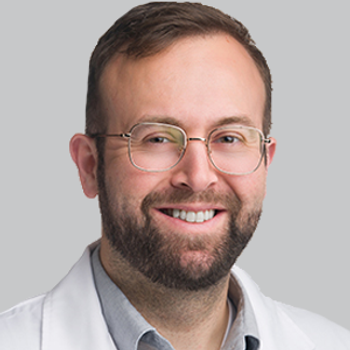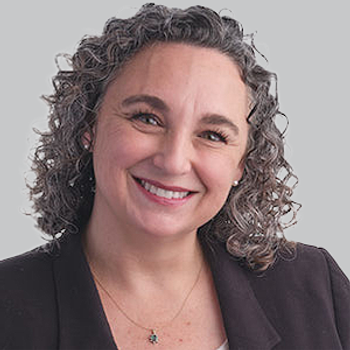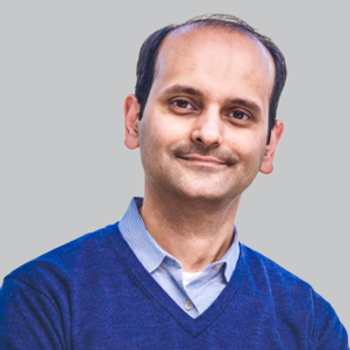
Treating Obstructive Sleep Apnea: Beyond CPAP and Toward Hypoglossal Nerve Stimulation

Vaishal Shah, MD, MPH, FAASM, FAAP, center director of the Sleep Disorders Center at Cleveland Clinic, spoke on the changes in how obstructive sleep apnea is treated, moving away from CPAP to more novel approaches.
Every night, millions of people go to bed exhausted and wake up just as tired. For many, the culprit is obstructive sleep apnea (OSA), a condition in which the airway repeatedly collapses during sleep, cutting off airflow and forcing the brain and body to wake up to breathe. This cycle results in poor quality sleep, daytime fatigue, and an increased risk of heart disease, diabetes, and cognitive decline.
While OSA is often regarded through a pulmonology or sleep-medicine lens, its implications increasingly intersect with neurology. From cognitive impairment and stroke risk to neuro-cardiovascular sequelae, neurologists are playing a growing role in diagnosing and managing OSA. Historically, continuous positive airway pressure (CPAP) has been the gold standard, but its real-world challenges often lie in tolerability and adherence rather than efficacy.
Challenges with CPAP in real-world practice
CPAP remains the most thoroughly studied and most effective first-line therapy for OSA. However, consistent nightly use can be difficult for many patients due to mask discomfort, skin irritation, claustrophobia, tubing constraints, and partner disturbance. When a therapy is hard to use, its benefits diminish. Real-world adherence rates hover between 40-70%, with averages around 50-60%, leaving a significant proportion of patients untreated despite the availability of “effective” therapy.
Evolving alternative or adjunctive therapies
For patients who struggle with CPAP, alternatives include oral appliances, positional therapy (side-sleeping), targeted weight loss programs, and surgical interventions (uvulopalatopharyngoplasty, tongue base reduction, maxillomandibular advancement). Each has merit, yet none have matched CPAP’s large-scale outcome data or are suitable for all patients, particularly those with moderate to severe OSA. This gap has fueled interest in therapies that combine precision with patient-friendly formats ‒ and neurostimulation is emerging as a key treatment.
Hypoglossal nerve stimulation: a novel OSA treatment from neurologic perspective
Hypoglossal nerve stimulation (HNS) represents a paradigm shift. Rather than externally forcing airway patency, it engages the patient’s own neuromotor apparatus. In brief, the hypoglossal nerve (Cranial Nerve XII) controls the muscles of the tongue and upper airway opening, which collapse during sleep in OSA patients. HNS uses a small implant (typically sited in the chest) with a lead to the hypoglossal nerve and a sensing electrode that detects respiratory efforts. With each inspiratory phase, the device delivers a calibrated electrical stimulation that advances or stabilizes tongue position, keeping the airway open.
Unlike CPAP, HNS requires no mask or airflow fan. Once programmed, the stimulation is automatic, and patients activate the device via a handheld remote before sleep.
Clinical evidence and neurologic implications
From the landmark Stimulation Therapy for Apnea Reduction (STAR) trial onward, HNS has demonstrated durable reductions in apnea-hypopnea index (AHI), improved sleep architecture and better daytime alertness and neurocognitive outcomes. Adherence rates exceed 80% in many published series, a striking contrast to CPAP. In various publications, efficacy can be greater than 70% of patients, depending on the efficacy criteria used. Given the neurologic sequelae of untreated OSA (stroke, vascular cognitive impairment, white-matter changes, and accelerated neurodegeneration), neurologists should view HNS not merely as a sleep-medicine option, but as part of the broader brain-health agenda.
Patient selection: neurologist’s checklist
HNS is not suitable for all OSA patients and requires careful selection. While surgical implantation carries risks compared to non-invasive options like CPAP, the overall health benefits often outweigh these risks for most patients.
Ideal candidates include all adults and select children aged 13 and older with Down syndrome and moderate to severe OSA, documented CPAP intolerance, BMI below the threshold (recently broadened), and favorable airway anatomy determined via drug-induced sleep endoscopy (DISE). Neurologists should also assess for coexisting conditions such as central sleep apnea, neuromuscular disorders, insomnia, periodic limb movement disorder, or narcolepsy, which may influence outcomes. A multidisciplinary approach ensures optimal patient selection.
Why this is a shift for sleep management
HNS represents a move from mechanical interventions such as masks to neuromodulation of airway musculature. For neurologists, this bridges device-therapy expertise ‒ such as deep brain stimulation (DBS) and vagus nerve stimulation (VNS) ‒ into the sleep domain. It democratizes OSA treatment for patients unable to tolerate CPAP and aligns with the trend toward personalized, physiology-driven medicine. Instead of a “one-size-fits-all” approach, therapy is tailored to the patient’s neuromotor profile—a concept familiar to neurologists.
Innovations on the horizon
Emerging advancements include closed-loop HNS systems that adjust stimulation based on real-time respiratory feedback, single-lead devices, neck-based implants with external detachable batteries, and integration with wearable sleep-monitoring platforms. Future applications may expand to broader BMI ranges, mixed-apnea populations, and patients with neurologic comorbidities such as Parkinson’s disease, ALS-related OSA, and stroke-related apnea. Longitudinal tracking of cognitive and neurovascular outcomes offers exciting opportunities for neurologists.
Conclusion
For millions of patients with OSA who either cannot tolerate CPAP or have not responded adequately, HNS offers a scientifically grounded, better-tolerated neurologically significant alternative. As OSA management evolves from masks to neuromodulation, neurologists should become conversant with precision-based multimodal OSA management, including HNS, integrate it into multidisciplinary care pathways and recognize its relevance for brain-health-centric outcomes. HNS may not replace CPAP entirely, but it expands our therapeutic arsenal meaningfully. In the field of sleep-neurology, HNS isn’t just an alternative ‒ it’s a new frontier.
Dr. Shah is Director of the Sleep Disorder Center and Medical Director of Sleep Laboratories at Cleveland Clinic
Newsletter
Keep your finger on the pulse of neurology—subscribe to NeurologyLive for expert interviews, new data, and breakthrough treatment updates.



































